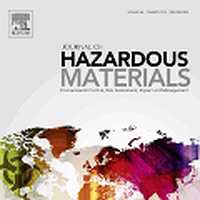Landfill arsenic pollution is a complicated problem because of the sophisticated species and transformation of fractions involved. This study investigated arsenic transformation behavior from the viewpoint of arsenic functional genes based on analysis of 29 aged refuse samples collected from 11 sanitary landfills in 10 cities in Zhejiang Province, China. Arsenic species distribution varied significantly with landfill process. Landfill contains rich arsenic resistant microbes. arrA genes were the key factor responsible for arsenic transformation and migration in landfill. Although the abundance of aioA genes was the lowest among the four tested arsenic functional genes, it was the second important genes for arsenic distribution. Microbial metabolic activity was the main cause of arsenic transformation, and arsenate reduction by microbes was a key driver of arsenic mobilization in landfills. Moreover, arsenate was reduced to arsenite and further methylated to monomethylarsine (MMA) and dimethylarsine (DMA), decreasing the total arsenic content during the landfill process, but also inducing a new risk because of the arsenic effluent will be more easily as the state of arsenite, MMA, and DMA in the liquid phase. Overall, this study provides a picture of arsenic species transformation and insight into key roles involved in arsenic pollution during landfill processes.

Arsenic transformation behavior mediated by arsenic functional genes in landfills
Review badges
0 pre-pub reviews
0 post-pub reviews

